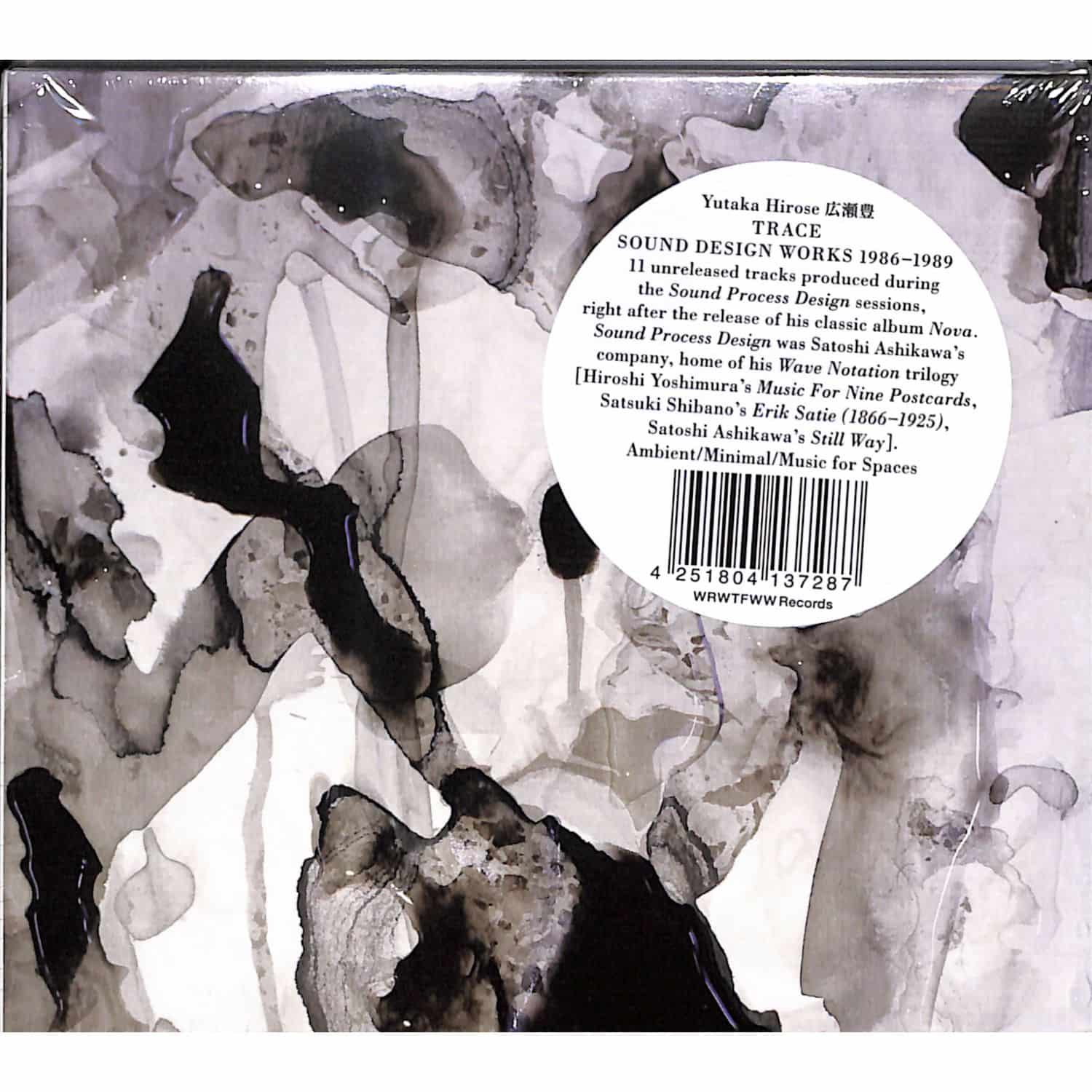
TRACE SOUND DESIGN WORKS 1986-1989
Side
BPM
Tracklist
CD incl Sticker, Liner Notes
WRWTFWW Records couldn't be happier to announce the release of Yutaka Hiroses never-heard before 11-track collection TRACE: Sound Design Works 1986-1989, available on double LP and double CD, with liner notes from the artist.
TRACE is a collection of 11 unreleased tracks produced by Yutaka Hirose between 1986 and 1989, during the Sound Process Design sessions, right after the release of his classic Soundscape series album Nova. Sound Process Design was Satoshi Ashikawa's label, home of the Wave Notation trilogy (Hiroshi Yoshimuras Music For Nine Postcards, Satsuki Shibano's Erik Satie 1866-1925 and Satoshi Ashikawa's Still Way). Following Wave Notation, Sound Process Design worked with museums, cafes and bars to create site-specific soundscapes, starting with the sound design of the Kushiro Museum. Yutaka Hirose was called to work on these projects.
Rather than simply providing pre-recorded compositions, Hirose sought to create a "sound scenery". To achieve this, he participated in the conception of the space and paid particular attention to the accidental combination of sounds by placing the speakers, using a multi-sound source, and following the concept of "sculpturing time through sound".
The composer explains: "sculpturing time through sound means that time, the space itself, the sound played in it, and the audience all become one sculpture. It is close to the idea of a Japanese tea ceremony where you use all of your 5 (or 6) senses to taste the tea."
TRACE: Sound Design Works 1986-1989 is divided into two parts. The Reflection segment is based on an ambient soundscape. It narrates "a sleep that starts with the sound of water droplets at dawn and slowly disappears into darkness" and feels like a natural and soothing progression of Nova. It was played in entrance halls, at events, in cafes and bars. The Voice from Past Technology segment expresses the dream world born out of that sleep and is based on what Yukata Hirose calls hardcore ambient, environmental music with a noise approach. It was played in museums and science centers.
All in all, TRACE is a crucial addition to every Japanese environmental music fans collection, alongside Midori Takadas Through The Looking Glass, Hiroshi Yoshimuras Green, Satoshi Ashikawas Still Way, Motohiko Hamases Notes of Forestry, Inoyamalands Danzindan-Pojidon, and Yutaka Hiroses very own Nova.
Points of interests
- For fans of environmental, minimalism, ambient, furniture music, Satoshi Ashikawa, Midori Takada, Hiroshi Yoshimura, entrance halls, museums, and time sculptures.
- 11 never-heard tracks from Yutaka Hirose (Nova) recorded between 1986 and 1989, available on Double LP and Double CD.[info sheet from distr.]

